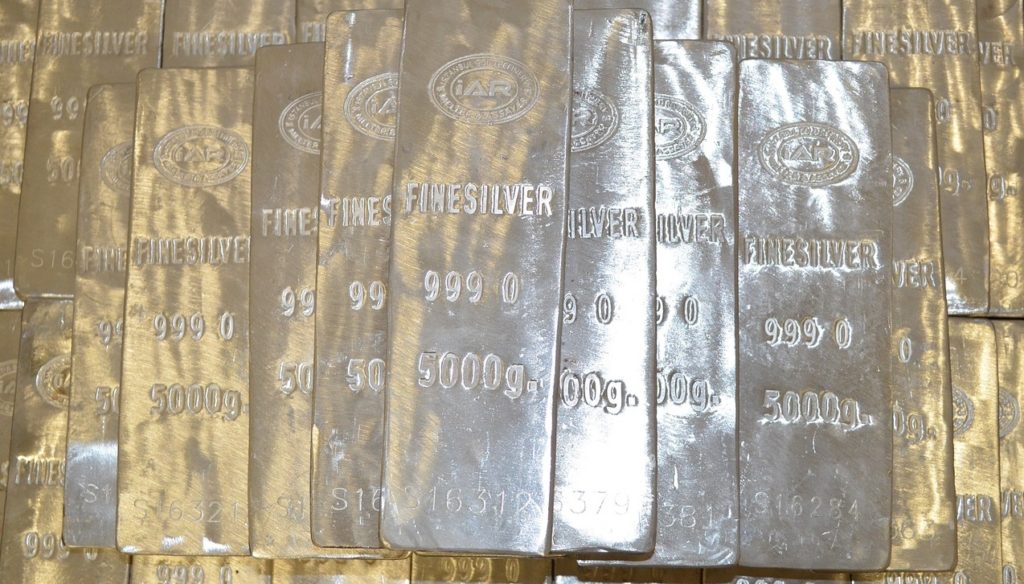by Peter Schiff, Schiff Gold:

All major categories of silver demand charted highs in 2022, contributing to a new total global silver demand record of 1.242 billion ounces.
This is one of several silver-related stories in the latest edition of Silver News published by the Silver Institute.
Industrial demand was up 5% last year to 556.5 million ounces, driven by rapidly increasing use in the green technology sector. Industrial offtake makes up nearly half of all silver demand.
TRUTH LIVES on at https://sgtreport.tv/
In 2023, we expect industrial fabrication will reach another all-time high, boosted by continued gains in photovoltaic (PV) applications as well as healthy offtake from other industrial segments. Led by end-uses in the green economy, industrial demand is forecast to rise yet again, by 4% to a new record high this year.”
Physical silver investment rose by 22% to 332.9 million ounces. It was the fifth consecutive year of increasing physical silver investment.
Silver jewelry production increased by 29%, and silverware fabrication jumped by 80%.
Record high silver demand coupled with lower mine production led to a 237.7 million-ounce market deficit, the second such deficit in as many years.
Importantly, the combined 2021 and 2022 deficits more than offset the cumulative surpluses of the previous 11 years.”
The Silver Institute projects another “hefty” deficit in 2023.
The latest edition of Silver News also highlights some other fascinating technological advances utilizing silver, along with some developments in the silver market. Here are some highlights.
- Silver nanoparticles could help lithium batteries last longer. After a large number of recharging cycles, the lithium in the batteries changes the chemical composition of the battery, causing it to fail. This process, known as lithiation, can be mitigated by using silicon as an electrode and punching it with atomic-sized holes to increase its porosity. As it turns out, researchers in Hamburg, Germany, have found great success at producing these battery-extending holes by shooting silver nanoparticles at silicon.
- US jewelry retailers reported a 52% increase in sales last year, confirming that silver jewelry continues to be a leading merchandise category for sellers, both in driving sales and providing margin, according to a survey conducted online from February 9 to March 8 by The Jewelers Collective (TJC), a leading jewelry magazine, on behalf of the Silver Institute.
- The United States Department of Agriculture has developed machine-washable antimicrobial wipes embedded with silver ions that can be used at least 30 times to clean hard and non-porous surfaces before being discarded.
- Perovskite – a mineral composed of calcium compounds – is on its way to replacing silicon as the material of choice for solar cells. Not only is it cheaper and more abundant than silicon, but modern processing techniques allow it to rival silicon in efficiency. If that isn’t enough reason to use perovskite, engineers at the University of Rochester have found a way to more than triple its efficiency by adding a layer of silver underneath it.
- Bone surgeries bring a high risk of infection because they entail the use of ‘scaffolding,’ man-made structures that hold bone pieces in place while they heal and regenerate. Despite a high level of infection control during operations, bacteria can cling to scaffolds, thus slowing recovery and necessitating a long course of antibiotics. Now, scientists at the Complutense University of Madrid have suggested that 3D printing composites of nanoporous material – containing pores between 2 and 50 nanometers and spread with silver nanoparticles that fill the holes – could help mitigate infection.
- A ‘solvated electron’ is a free electron floating in a solution – often water or ammonia – that can break down carbon dioxide or chemical pollutants safely and sustainably. They also can help turn carbon dioxide into non-fossil fuels and reduce greenhouse gases during the manufacturing process of fertilizers. But there’s a catch. Solvated electrons are difficult and expensive to produce, but chemists at Rice University, Stanford University and The University of Texas at Austin have shown that coating a metal electrode with silver nanoparticles can increase the number of solvated electrons by 10 times.



